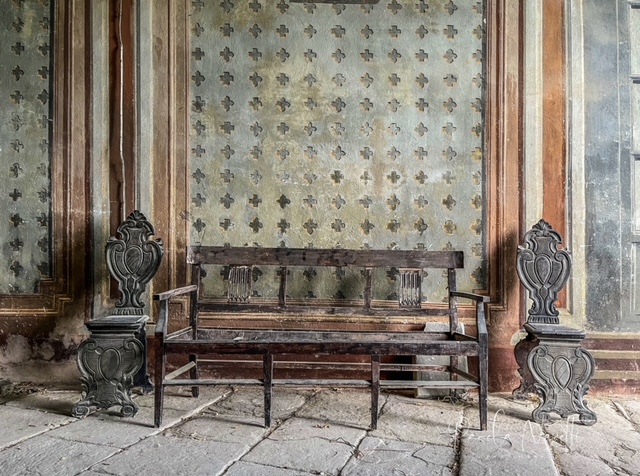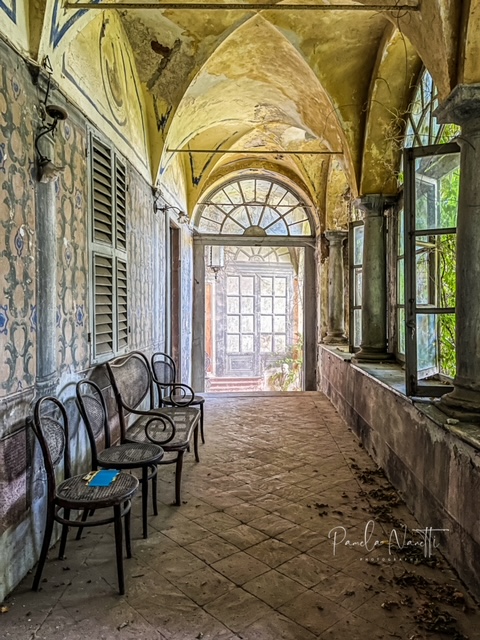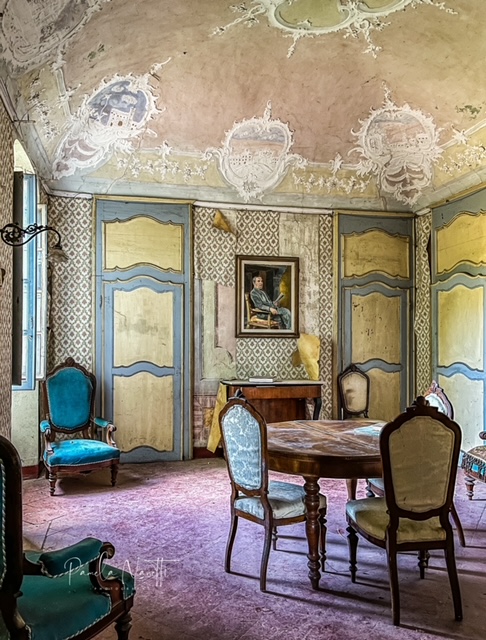Reading time: 9 minutes
My name is Pamela, a hidden treasure hunter from Bologna, Italy. For about a year now, I’ve been wandering around Italy exploring abandoned, unsafe and dilapidated places, rich in history and with unique architectural value and beauty.
As you read on, you will realize that this is an unusual topic for a magazine dedicated to Italian tourism. It’s a unique journey that isn’t for everyone; nor could everyone partake in it. You could compare it to climbing aboard Marty McFly’s DeLorean in the Back to the Future trilogy and being transported into another dimension.

What Is Urban Exploration?
I would like to introduce you to a practice that is still rather unknown to many: “Urban Exploration” or simply, “Urbex”.
Urban exploration and speleology (cave exploration) involve exploring places that are often covered in dust, dilapidated, and even reduced to rubble which have become a sort of pilgrimage destination for many. Through images and posts shared on social media, hashtags, and articles, a true community has developed and is attempting to keep these locations alive, and possibly- hopefully- change their destiny.
Among Castles, Ruins, and Forgotten Places

The locations in question are often abandoned homes, factories, historic homes, castles, villas, and simply ruins whose existence has been forgotten. They remain invisible in the shadows, crystallized with the passage of time, and whose vandals have marked their inexorable, sad ending.
Some are incredibly beautiful, hidden among the vegetation that takes over their spaces and the dust that marks their decline and degradation. Frescoed walls disrespectfully colored with spray cans, bas-reliefs consumed by time and humidity, imposing and elegant marble staircases and fireplaces disfigured of some of their parts, chasms in the floors like craters of unexploded volcanoes, images of a melancholy decadence.
Urbex Fundamentals
There are two fundamentals of Urbex: a passion for exploration and for photography. Through images, the locations can recapture the splendor of their past, leave their mark in the present, and document their charm for future reference.
Urbex is fascinating; there are many of us who practice it. Photographs can also be a way to document or even denounce the state of degradation of these buildings that have been left to their own demise. Properties that have become too expensive to manage and that society could and should recover but which instead seem to wait silently to be swept away by a bulldozer.
This article isn’t intended to be an invitation or an encouragement to practice urbex, actually, far from it. It is too risky; we are talking about abandoned buildings whose structural conditions are unknown and are often unsafe. Don’t attempt it! What’s more, trespassing on or even outside these locations could be considered a crime and cause you unpleasant legal troubles. These risks are something that every explorer has considered thoroughly.
Exploring the Munchausen Villa in Strevi, Piedmont
In this post-Christmas festive atmosphere, in order to keep the “magic” going, I’ve prepared a new and unusual journey through time. It’s completely virtual, certainly more comfortable, cheaper, and definitely safe, but gives ample space to the fervent imagination found in all of us. Come with me as we are catapulted into another time and place in history.

The Villa del Barone di Munchausen is located in the historic center of Strevi, a small charming Renaissance village in Piedmont.
The villa dates back to the 1600s, was initially the residence of a bishop, then underwent several changes of ownership until it was purchased by the Pellati family around 1869.
Nicola Pellati, an important figure in Italian history, was a man of austere and modest behavior who graduated in civil engineering and architecture from the University of Turin. He continued his studies in Paris at the Ecole des mines, became a professor of geology and mineralogy, and the Director of the Royal Geological Office. He was responsible for the creation of the geological map of Italy on a scale of 1:100,000.
Pellati was a founding member of the Italian Geological Society, and was several times advisor and vice president, until becoming its president. In 1900, under his presidency, the Society’s summer meeting was held in the villa, which was attended by numerous senators and deputies.
During his career, he received important assignments from the Ministry of Agriculture, but also from those of Public Works and Finance.
Over the centuries illustrious guests have passed through the villa’s halls including Princess Czernicheff, the Prince of Wales, the future Edward VII, and in the twentieth century, General Paolo Spingardi, Baron Winspeare, the Prince of Piombino, the poet Trilussa, a friend of the count Francesco Pellati, son of Nicola and Director of the Accademia dei Lincei.
“Fragile and strong, ruins are a gift…”
This villa is among the most fascinating and exciting places that I have photographed, full of history and the characters who have visited it. I had the opportunity to access it accompanied by the owner (anyone interested can contact her directly and set up a visit). As the two of us went from one room to the next, we retraced its history and all the anecdotes related to it. These memories need to be given a voice because we live in the present and are able to look to the future partly because of our past experiences.

There is a lot of work to do. The owner has some ideas in mind in an attempt to guarantee the villa’s conservation. Since it is protected by the Superintendency of Fine Arts due to its historical and artistic importance, there is the possibility of establishing a non-profit association. If that were to happen, the villa could host cultural events such as art exhibitions and classical music concerts.
This magnificent residence is full of historical contents, furnishings, and various period objects. Its finely frescoed walls and ceilings begin at the portico connected to the garden. An imposing wisteria climbs the walls and when in full bloom, its aroma and color permeate the villa, as an overture.
Urbex is also this: entering into places with those who are willing to share their history and open up doors that were previously closed. It’s a chance to go beyond the” photo opp” and enter into an intimate, pulsating history.
I’ve seen many places like this, imagining the chaos they’ve endured, the way they’ve been looted, and then become themselves again. Abandoned places that have yet to be rediscovered and respected in all their nuances. Fragile and strong, ruins are a gift, and destruction is the way to transformation, similar to human life.
About the Author

Pamela Nanetti was born and lives in Bologna, and has long been linked to the Biella area through friendships and personal ties. A mother, and back office employee, she started writing by chance, as a way to get to know herself. Courageously starting a journey without being certain of its ending, in which one finds his true personality, and where the heart does not allow for calculations but survives on instinct. From this, her first book, Viaggio nel cuore di un urbexer (Journey Into the Heart of an Urbexer), was born.
For about a year or so, she has been discovering the world of Urban Exploration, Urbex, wandering amongst abandoned, unsafe, and dilapidated places that are full of history and unique architectural value and beauty. In this journey through time, she is transported to another parallel dimension. Taking advantage of her passion for photography and curiosity of the unknown, with the recklessness of a child, she enters historic homes, castles, and old decaying ruins that have been taken back by nature. Their existences forgotten, invisible, hidden in the shadows, and crystallized in time.
Intrigued by this unusual hobby, even the newspaper La Stampa, decided to dedicate space within its pages to her and now, thanks to a recent collaboration with the Eco di Biella newspaper, she has the opportunity to share these personal experiences with a wider audience.
Photographing these locations returns them to their original splendor and is an intimate way to express emotions and sensations, like a love letter to the one you just can’t seem to forget. A collection of photographs and experiences that I document piece by piece.
..."I was picking through the smashed houses in my heart, and rebuilding on the ruin." (D. Roberts - Shantaram)
Continue reading more by this author.

